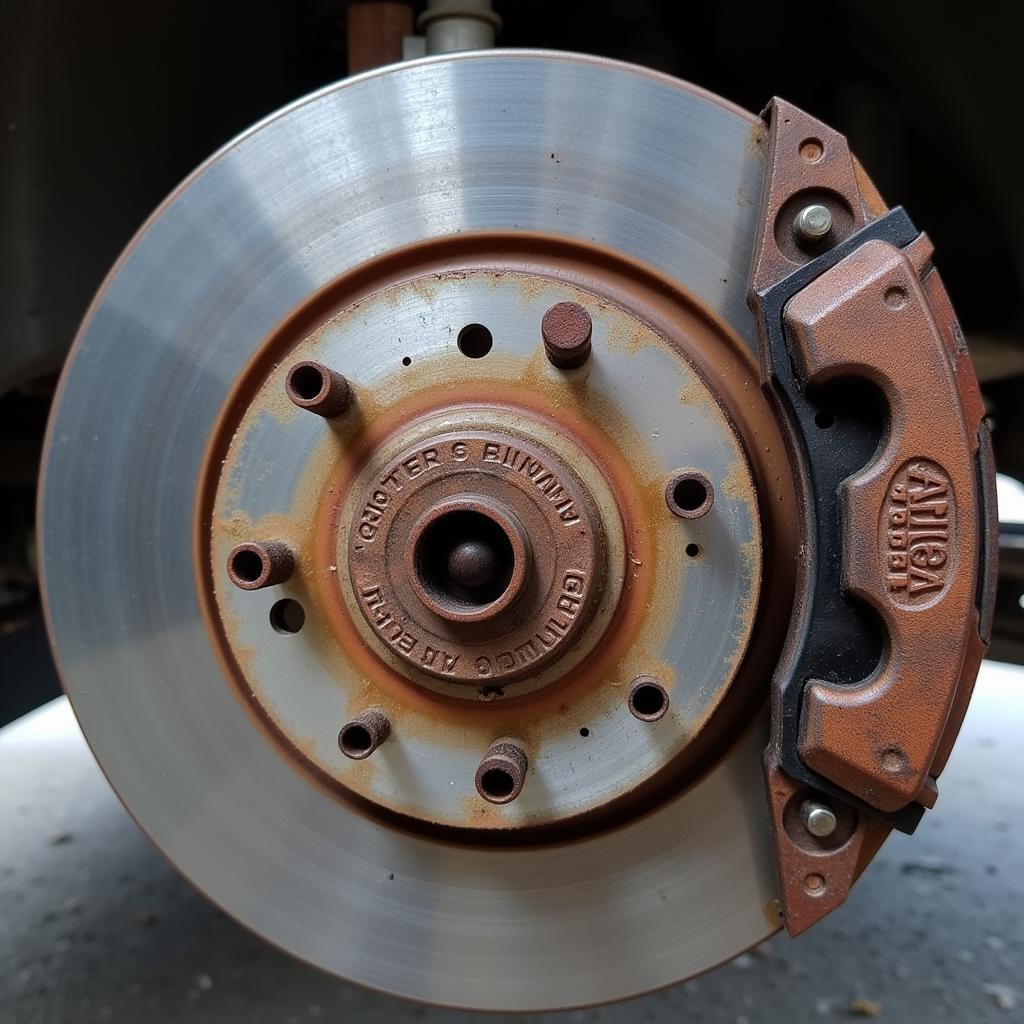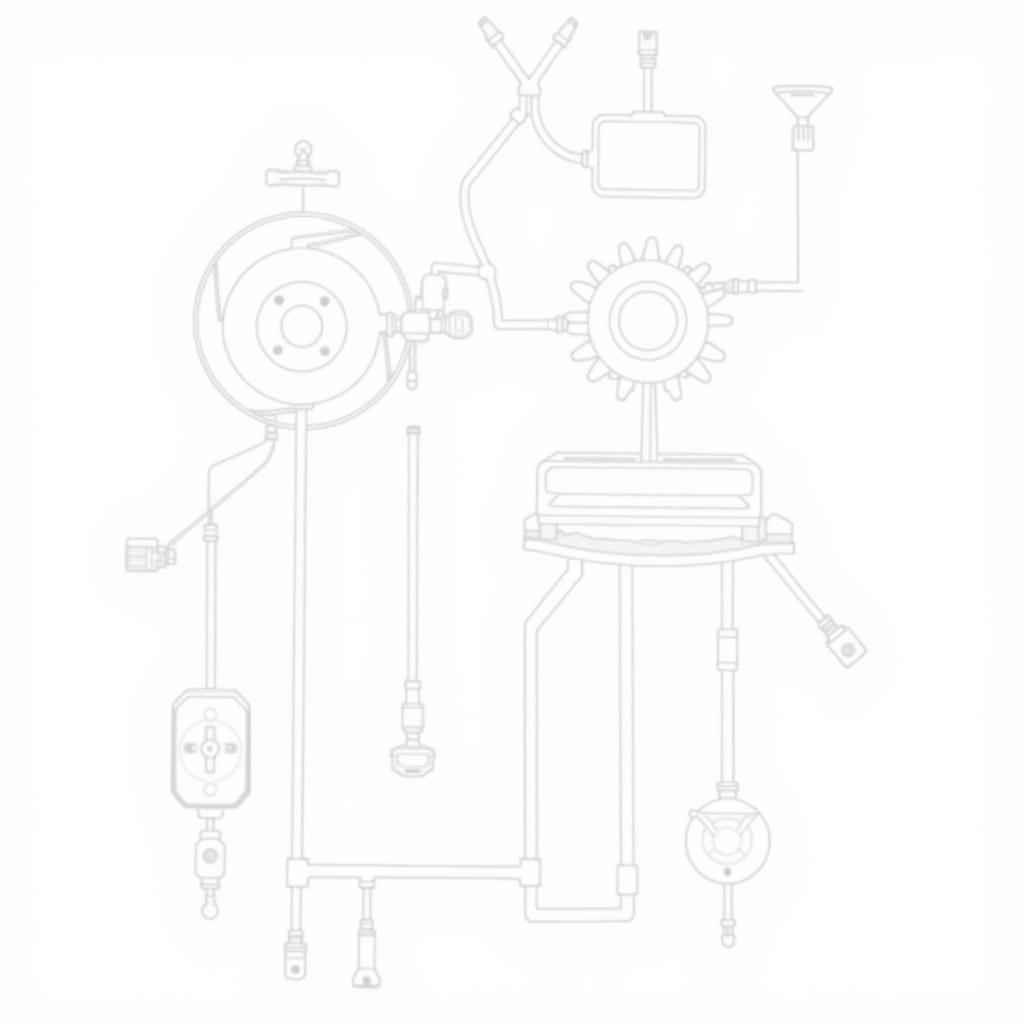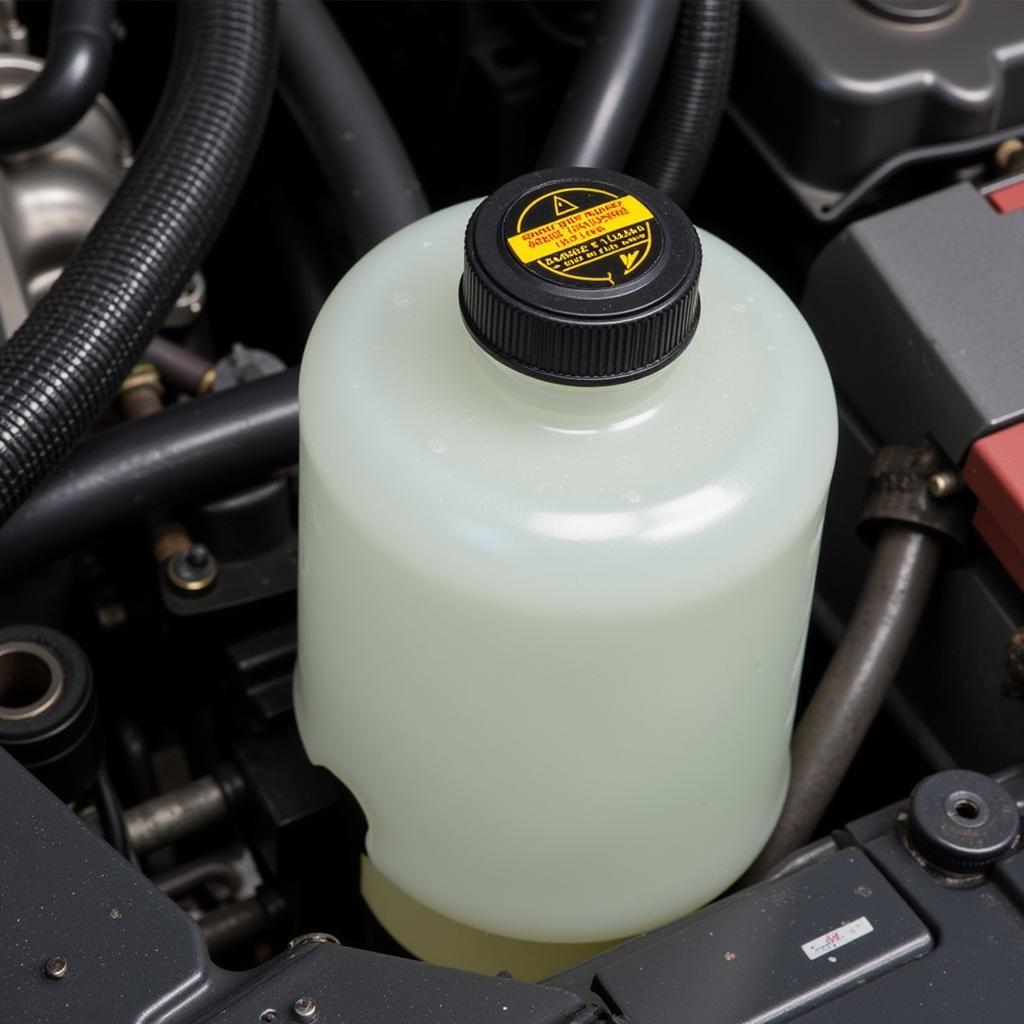The dreaded brake warning light on your 2005 Subaru Outback can be a source of anxiety. Understanding why your 2005 Subaru Outback brake warning light is illuminated and how to address it is crucial for safe driving. This comprehensive guide will help you diagnose the issue, explore potential causes, and offer solutions, ranging from simple DIY fixes to more complex repairs requiring professional assistance.
Understanding Your Subaru Outback’s Brake Warning Light
The brake warning light is part of your Outback’s safety system, designed to alert you to potential braking system problems. It’s not just about low brake fluid; it can also indicate issues with the ABS (Anti-lock Braking System), parking brake, or other critical components. Ignoring this warning light can lead to dangerous driving conditions and costly repairs down the road.
Common Causes of a 2005 Subaru Outback Brake Warning Light
Several factors can trigger the brake warning light in a 2005 Subaru Outback. Identifying the root cause is essential for effective troubleshooting.
Low Brake Fluid
One of the most common culprits is low brake fluid. Brake fluid naturally depletes over time as brake pads wear down. A leak in the brake lines or a faulty master cylinder can also contribute to low fluid levels.
Worn Brake Pads
Brake pads are designed to wear down with use. When they reach a critical thickness, the brake warning light illuminates to indicate the need for replacement.
Faulty Brake Sensor
A malfunctioning brake sensor can also trigger the warning light, even if the brake fluid and pads are in good condition. These sensors can become damaged or worn over time.
ABS Issues
Problems within the Anti-lock Braking System (ABS) can also activate the brake warning light. This can range from a faulty ABS sensor to issues with the ABS control module.
Parking Brake Engaged
Sometimes, the simplest explanation is the correct one. Make sure the parking brake is fully disengaged. A partially engaged parking brake can illuminate the warning light.
Diagnosing the Problem
Start by checking the brake fluid level. If it’s low, top it off with the correct DOT-specification brake fluid. If the light persists, inspect the brake pads for wear. If they appear thin or worn, they likely need replacing.
Checking the Parking Brake
Ensure the parking brake is fully released. This simple check can save you time and money.
Consulting a Professional
If the problem isn’t readily apparent, it’s best to consult a qualified mechanic specializing in Subarus. They can diagnose more complex issues, like ABS problems or faulty sensors, using diagnostic tools.
 Worn Brake Pads on a 2005 Subaru Outback
Worn Brake Pads on a 2005 Subaru Outback
What to Do if Your Brake Warning Light Comes On While Driving
If the brake warning light comes on while driving, pull over safely and immediately. Check the brake fluid level and look for any visible leaks. If you notice a significant leak or feel a change in brake pedal pressure, do not continue driving. Have the vehicle towed to a repair shop.
“Ignoring a brake warning light is like ignoring a ticking time bomb,” says John Smith, a seasoned automotive technician with over 20 years of experience specializing in Subaru repairs. “Addressing the issue promptly can prevent costly repairs and ensure your safety on the road.”
Solutions and Repairs
Depending on the diagnosis, solutions range from simple DIY fixes to more involved repairs.
- Low brake fluid: Top off the fluid and monitor the level closely. If it drops quickly, suspect a leak and have it inspected immediately.
- Worn brake pads: Replace the brake pads. Consider replacing rotors if they’re excessively worn or damaged.
- Faulty sensors or ABS issues: These require professional diagnosis and repair.
 2005 Subaru Outback Brake System Diagram
2005 Subaru Outback Brake System Diagram
Conclusion
Addressing a 2005 Subaru Outback brake warning light promptly is crucial for safe driving. Understanding the potential causes and following the appropriate diagnostic steps can save you time, money, and potential headaches. Whether it’s a simple fix like topping off brake fluid or a more complex repair involving the ABS system, addressing the issue promptly ensures a safe and enjoyable driving experience.
“Regular brake system maintenance is key to preventing future issues,” adds John Smith. “A little preventative care goes a long way in keeping your Subaru on the road and your brakes performing optimally.”
FAQ
- How often should I check my brake fluid level? At least once a month, or as recommended in your owner’s manual.
- Can I drive with the brake warning light on? It’s not advisable. Pull over safely and assess the situation, or have the car towed if necessary.
- How much does it cost to replace brake pads? The cost varies depending on the type of pads and labor rates, but expect to pay between $150 and $300 per axle.
- How long do brake pads typically last? Brake pad lifespan varies depending on driving habits, but they generally last between 30,000 and 70,000 miles.
- What is the difference between ABS and non-ABS brakes? ABS prevents wheel lockup during hard braking, enhancing control and stability.
- What should I do if my brake pedal feels spongy? This can indicate air in the brake lines, which requires bleeding the brakes. Consult a mechanic.
- Is it safe to replace brake pads myself? If you have mechanical experience, it’s possible. However, if you’re unsure, it’s best to consult a professional.

